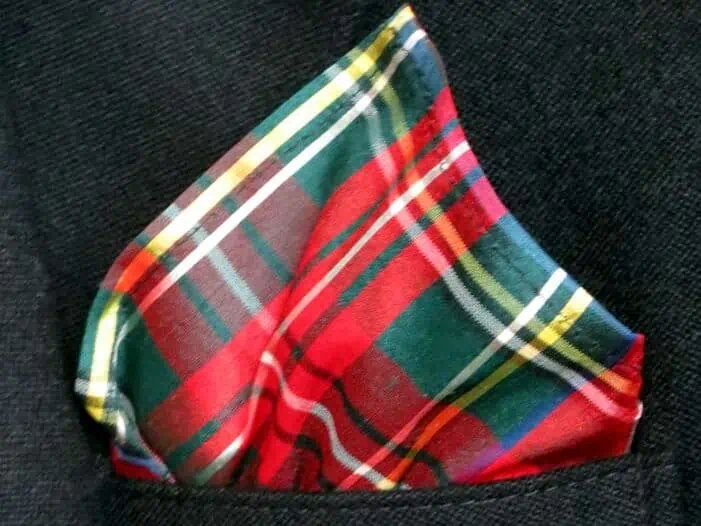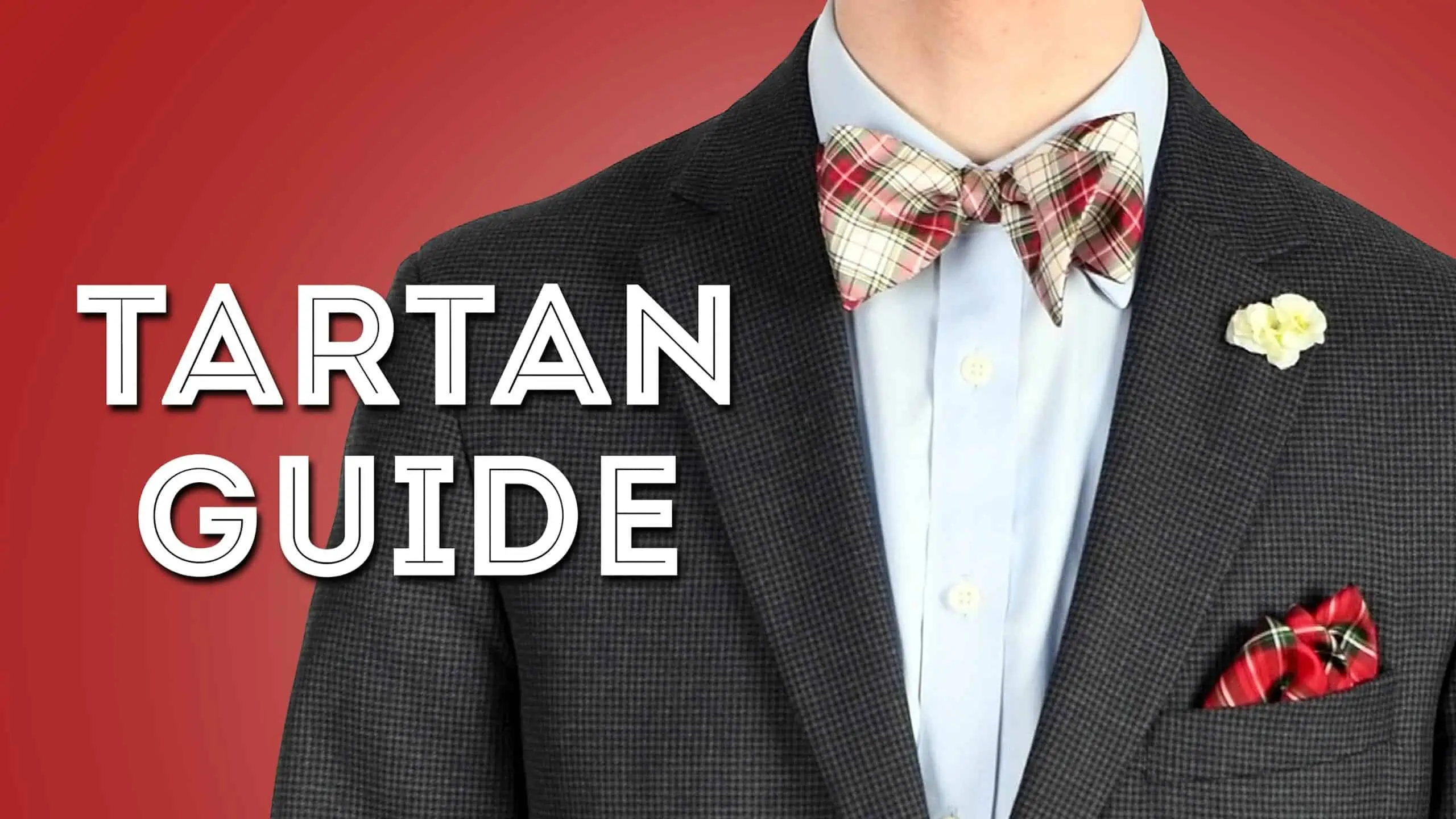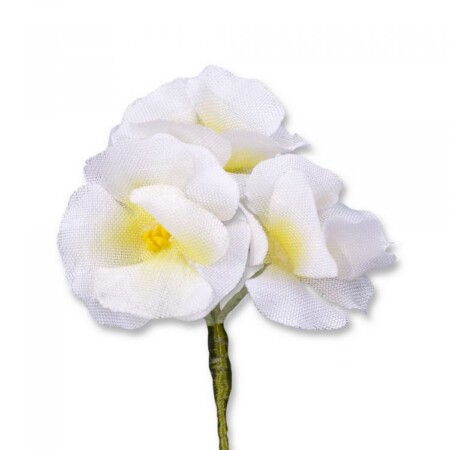Given its heritage, tartan is an ideal choice for autumn and winter wear, as well as for the business casual dress code. Read on to learn all you need to know about how you can wear tartan the smart and dapper way.
Tartan Defined
In the most general terms, tartan is a type of checked pattern. As a reminder, a check is a pattern of horizontal and vertical lines that create small squares and that can incorporate multiple colors though it doesn’t necessarily have to. It can also be further enhanced by an overcheck in a different color.
More specifically, tartan is a pattern of intersecting horizontal and vertical bands in differing widths and colors and in its most traditional weave, would be considered a serge twill. Tartans alternating weave forms visible diagonal lines where different colors cross and can also give the appearance of creating new colors where these lines intersect. Tartans originated almost exclusively in woven wool but today, you can find them in a variety of other materials. And while the definition of a tartan was originally one that was made only from a woven material, you can also find tartans today that are printed instead of woven.
In traditional Scottish Gaelic, tartan is known as breacan which means multiple colors. As late as the 1830s, a tartan didn’t actually have to be made up of any pattern at all, just multiple colors but since then, the meanings of tartan and breacan merged over time to become known as a certain pattern in a certain type of weave.

Where Does The Term “Plaid” Come Into Play?
Especially in the United States, tartans are generally referred to by the more generic term plaid. In Scotland, a plaid is a garment, not a pattern. Specifically, it refers to a long rectangular strip of cloth worn over the shoulder usually the left and that can be folded or unfolded to be used as a blanket. Also, these cloths can be hand pleated and worn with a belt in which case, they’d be referred to as belted plaids and are worn in place of a conventional kilt which has pleats sewn in. Since these types of garments almost always sport different tartan patterns, the confusion between the words tartan and plaid likely has its source here.

Also, plaid cloths in a particular tartan pattern known as the Rob Roy became commonly traded in the American West in the 1880s. This pattern which came to be commonly associated with cowboys, as well as Lumberjacks, came to be known as buffalo plaid in the United States further cementing the confusion between the two terms. Outside of Scotland, the term plaid can now also refer to any type of checked pattern in two or more colors.
Also, here’s an important definition that we will be employing later on, the specific pattern on any given tartan is referred to as a set. The shades of color in any given tartan set can also be varied to produce different variations on the same general tartan.

Tartan Origins
The earliest documented tartan found in Scotland referred to as the Falkirk tartan dates from the third century CE and features a very simple check pattern of alternating dark and light natural wool. Tartan, as we know it today, is not thought to have existed in Scotland prior to the 16th century. The dress act of 1746 attempted to bring the warring Scottish clans under British government control by banning tartan entirely as well as other elements of Gaelic culture. When this Act was repealed in 1782, tartan was no longer just an everyday fabric but was then decided that it should be made the national dress of Scotland.
In 1842, Queen Victoria and her husband Prince Albert traveled to Scotland themselves and purchased Balmoral Castle there. Prince Albert personally took care of the interior design of the castle himself and he incorporated lots of tartan into it. Queen Victoria designed the Victoria tartan and Prince Albert designed the Balmoral tartan and both of these still see wide use today by the Royals and by commoners. Because of its association with British royalty and aristocracy around this period, tartan, in general, started developing an air of dignity and exclusivity to it.

This trope has occasionally been subverted, however, for example, the punk rock scene of the 1970s in Britain saw widespread use of tartan as a kind of mocking anti-establishment symbol. Also, the grunge music scene of the 1990s, particularly in the United States, saw lots of tartan patterns used as well. All this being said, Scotland is where tartan really took root to the extent that different Scottish clans adopted clan tartans over time.
The naming and registration of specific clan tartans began in 1815 upon a resolution from the Highland Society of London. Today, however, almost all Scottish clans have several types of tartans associated with their name and several plans also have official tartans as documented by various official societies.

How To Wear & Pair Tartan
Given its heritage, tartan is an ideal choice for autumn and winter wear, as well as for the business casual dress code. Conversely, it’s a little too rustic to be worn in a traditional white-collar business environment and while it’s too loud to be worn with white tie ensembles, conservative tartans such as black watch have had a history in Black Tie dress codes since at least the middle of the 20th century.

Shirts
In the realm of casual wear, especially in the cooler months, it’s hard to beat a flannel button-up in tartan or in a more general plaid pattern. It can be worn with denim, corduroy, or khakis and even layered under a sport coat perhaps in a fabric like a muted wool tweed.

Suits
While full suits in loud red and green tartans are available, these types of ensembles are really more at home in the world of high fashion than in traditional menswear. Instead, we suggest opting for a more subtle and largely monochromatic tartan which is to say really more of a general plaid or something that’s dark yet colorful such as the black watch set. Layers underneath the suit’s jacket should ideally be subdued and monochromatic such as a white or light blue dress shirt or a dark turtleneck sweater. Similarly here, your accessories should also be tasteful and uncomplicated so as not to clash in focus with the tartan pattern.

Sport Coats
Tartan sport coats can be a little bit more bright and bold than full tartan suits can. As with suits and sweaters though, it’s best when wearing a tartan sport coat to make sure that the other elements of your outfit, including your trousers and shirt, are more subdued.

Odd Vests
Also, tartan wears well as the pattern on an odd waistcoat or vest. Though if you’re wearing one of these, it’s best to pair it with a plain or very subtly patterned jacket so that the two patterns don’t clash.
Trousers
Tartan trousers worn without a matching jacket should generally follow the same principles we’ve just outlined for solo tartan sport coats. A subdued set paired with a muted jacket, either plain or faintly patterned, will be your most versatile option. Whereas something bold and loud in tartan patterns on trousers would situate them firmly within the realm of go-to-hell pants.
Neckwear
A tartan necktie can be even more colorful than the jacket or trousers can be but the louder the tartan pattern on an accessory gets, the more muted your other garments should be to help balance things out. A plain dark suit or sport coat perhaps in navy or charcoal will work best with a bold pattern tartan tie. If you’re feeling a bit more adventurous, these garments can also incorporate subtle patterns of their own though remember that balance is key.
Still within the realm of neckwear, a great way to introduce tartan into your outfits is through an accessory that’s primarily designed to be functional. As such, a tartan scarf is perhaps the poster child for this principle. As before, it’s easiest to opt for subtler tartans with more neutral based tones.

Pocket Squares
For tartan pocket squares, the same rules generally apply as for neckwear. Tartan pocket squares either in wool or silk can add a pop of color to another more muted outfit and out of all the types of garments we’ve discussed today, you’ve got the greatest liberty to be really bold with a pocket square in tartan.

Hats
Regarding hats, flat caps are a traditional choice that remains stylish today. They’re great for fall style and they come in various materials primarily tweed and also different kinds of pattern and color combinations including tartans and generally plaids.

Footwear
Some more casual men’s shoe designs might also feature tartan patterns directly incorporated. Tartan shoes aside, here are a few tips for pairing more conventional shoe styles with tartan patterned garments:
As we’ve said in the past, brown is the most versatile shoe and boot color for outfits consisting of a combination of sport coats and odd trousers. You can get away with an informal shoe in black as well such as perhaps a horse bit loafer if the tartan patterned elements in your outfit are especially bold. If you’re wearing more muted tartan accessories with a charcoal suit, however, feel free to wear a conventional black oxford shoe.
Boutonnieres
Of course, with any type of outfit, boutonnieres are a great way to add that special touch of sprezzatura. Choose a flower that isn’t too large as tartan can already be a relatively bold pattern on its own and go for something in a color that echoes something in the tartan or elsewhere around your outfit.
CONCLUSION
There are over 5,000 different individual sets of tartan available so any man should be able to find a particular tartan pattern that suits his tastes as well as the occasion, provided he follows the advice we’ve outlined in this article.
Outfit Rundown
I’m incorporating tartan into my outfit in a fairly safe and standard way which is to say, in my accessories, the vintage bow tie features a tartan set primarily in white and red with accents in green black, and yellow. Meanwhile, the set of the pocket square is primarily red with accents in black, white, and green. We wouldn’t normally suggest that you wear two different tartan pieces at one time but because these two pieces feature different principal colors in their sets and also because they’re at slightly different scales, we’re just showing you that in principle, it can be done. Of course, don’t ever wear a tartan tie and pocket square in the exact matching set as they’re just going to look like you bought them together at the store and that’ll come off as pretty amateurish. Following the advice we gave several times, the remaining elements of my outfit are conservative and muted to balance with the bold tartan patterns.
My sport coat features a very faint houndstooth pattern in navy and a slightly lighter blue. On that note, you can take a look at our guide on houndstooth patterns in menswear. My shirt is a plain light blue to complement the jacket. My trousers are plain charcoal and my socks are plain navy. Also to compliment the jacket, my dark oxblood penny loafers echo some of the red tones that are found in the different tartan sets. My other accessories today are my platinum-plated sterling silver cuff links in an Eagle Claw design and featuring malachite as the stone. I could have gone with red cufflinks for a more typical look but I decided it might be a smart choice to go for something to echo the secondary colors of the tartan sets. Finally, my white phlox boutonniere is small and understated so that it doesn’t get in the way of the plaid tie and plaid pocket square.
What were you most surprised to learn about the history of tartans and plaids in menswear?






Not only do clans have specific tartans, so too do locations. In Canada, each province has a tartan and the country itself has a tartan. It is the beautiful Maple Leaf tartan, bestowed upon the country in 1964, when we got our Canadian maple leaf tartan. There is only one tartan associated with a profession. That is the Clergy tartan which Presbyterian ministers are allowed to wear. There are also military tartans. The original Black Watch is such a tartan. Never wear two tartans at the same time. If you have any Scottish ancestry, try looking up online your clan tartan. An online tartan finder will be of great assistance to you.
I am a Scot and regular kilt wearer and love to nit-pick. Your article, annoyingly to me, was very well written and informative. I was particularly pleased that you tackled the common mistake of using plaid to mean tartan which most Scots find realy irritating. You did commit one error – whoopee!. The word for the pattern is “sett” with two “t”s. Meal do naidheachd, a bhalaich. Rinn thu gu math.
A woman once asked a Scotsman if anything was worn under his kilt. He assured her to the contrary, everything was in perfect working order, as good as new. :-)
At one time, tartans were serious business. My ancestry is the MacGregor clan, and they ended up on the losing side of one of the many wars that ravaged our people. There was a Proscription Order issued that carried a death penalty for anyone using the name, the clan crest, or wearing the MacGregor clan tartan. When one of my ancestors moved to America in the late 1600’s, he apparently decided that in order to live a peaceable life here in the New World, it would be best to change his name. He chose to use the phonetic spelling of the Gaelic phrase “Children of the mist”, which is what Clan MacGregor was known as for their ability to attack a foe and then quickly fade into the mist. The MacGregor tartan necktie has been a part of my wardrobe for many years, as it was for my father (and possibly others before him). Knowing the history of what you wear makes life more enjoyable.
Thank you for sharing!
Interesting article…although you have failed to address the various clans in Scotland which have particular tartans which are associated uniquely with the clan. e.g. the Bruce clan, the Macartney clan…etc…etc….The article needs to be more comprehensive.
Surprised that you left out that most tartan of menswear, the kilt. I happen to wear one, that’s why I mention it.
I agree with a couple of the previous comments about your tartan summary, that is, that you did a nice job of summarizing the wearing of tartan as a modern fashion accessory but I missed any discussion of tartans’ association with particular clans and the desirability ( or not) of wearing your own tartan if there is one is connected with your family. Some consideration of the kilt and what to wear with it would also be good.
The rule is one of good taste. If one is not associated with a particular clan, as long as it’s worn with respect anyone can wear any tartan.
Something that adds a further layer of choice …… many of the trad tartans come in not one, but three versions:
-Standard. The sort of colours you’d expect to see in Military or Clan settings
-Ancient. Muted earthy colours, better suited to country wear,
-Evening Dress. Lighter, most probably with a white /cream background
Very interesting article and video – thank you!
It is our pleasure. :)
Mr. Schlueter,
In standard American pronunciation, when the word “primer” means “introductory manual”, it rhymes with “dimmer” and “simmer”, not with “timer”.
It’s one of the best patterns on bow ties! I have some, and they work very well during the day for me all over the year.